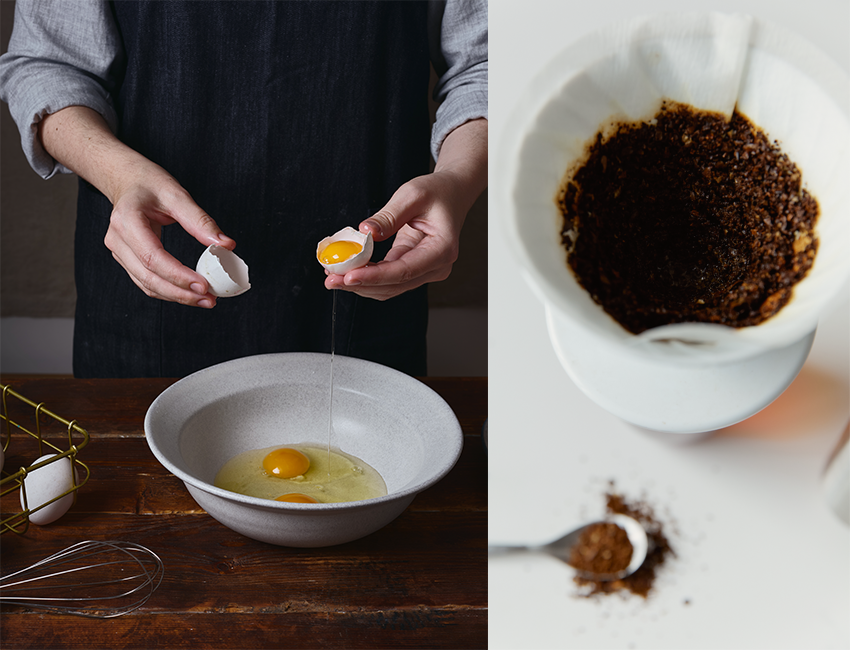If there is one wintertime task that will help your garden, flowerbeds, hanging baskets and container plants come this summer, it’s saving back your coffee grounds and egg shells.
It just so happens that these two by-products of the breakfast table are teeming with powerful nutrients. Nutrients that not only help grow more productive plants, but healthier ones too.
We have been using coffee grounds and egg shells in our garden, flowerbeds and containers for well over 10 years now. And there is little doubt how much they contribute to the overall success of our plants. In fact, we wouldn’t dare garden without them!
Here is a look at how we use both to power and protect our plants. We also included a short section at the end of the article on how to best save them over the winter months in order to have them ready for spring planting.
How To Use Coffee Grounds And Egg Shells To Strengthen Your Plants
For us, it all begins when we begin planting our transplants in the garden. We use a mix of crushed egg shells and coffee grounds in every planting hole.
Crushed egg shells add much-needed calcium and other trace minerals to the soil as they break down. And calcium is incredibly important to the health of crops like tomatoes and peppers. Especially when it comes to the issue of blossom end rot.
Blossom end rot is one of the most common ailments of garden tomato plants. It causes black spots to form on the end of young tomatoes, peppers and even squash, cucumbers and zucchini.
Those spots eventually rot out the fruit, and can wreak havoc on your harvest. And the cause of blossom end rot? A lack of calcium in the soil. But by adding a few crushed egg shells in each planting hole, you help to provide back the calcium plants need.
So what about the effect of a few tablespoons of coffee grounds placed into each planting hole too? It just so happens that coffee grounds contain nitrogen, potassium, phosphorus and other vital minerals. All of which are vital to growing strong, healthy, productive plants. And when coffee grounds are used in the planting hole, they act as the perfect natural slow-release fertilizer to the plants. But we don’t just stop there – we also add both ingredients on the surface of the soil after planting.
After lightly tamping in our plants, we crush a few more shells and sprinkle them around the base of each plant. Likewise, we sprinkle around a few tablespoons of coffee grounds as well. Not only do both leach valuable nutrients into the soil as they break down, they are also a great way to control slug population naturally. As it turns out, the sharp edges of the crushed shells and even the coffee grounds are a big deterrent to the soft skin of slugs.Coffee Grounds & Egg Shells In Flowerbeds
The shells/ grounds technique works equally well to power annual flowers too. In fact, we use the same planting technique for all of our flowerbeds, and even add the mix into our pots and containers too.
Strength Hanging Baskets & Container Plants In Season
Whatever you do, don’t put away those coffee grounds after your planting chores are done. That is because you can continue to use them to power your container and hanging baskets all summer long.
A few tablespoons of grounds sprinkled on plants every few weeks can act as a slow release fertilizer to your plants. And every time you water or it rains, those nutrients leach down into the roots to power up your plants.
Both coffee grounds and egg shells are incredible for a compost pile. The nitrogen in the coffee can actually help heat the pile. And as both break down, they leach their vital nutrients into future compost.
In fact, from mid summer until late winter, that is exactly where all of our shells and coffee grounds end up. And be sure to crush those shells when adding to help speed up decomposition.How To Best Save Your Coffee Grounds & Egg Shells.
We are often asked about the best methods for saving the shells and grounds through winter. There are a couple of easy methods to keep both from molding or having odor issues.
If you live in a cold winter environment like we do, you can simply save them in a 5 gallon bucket outdoors. We put a tight lid on ours, and the cold temps act as a freezer.
If you live in a warmer climate, placing them in a bag in the freezer is a great option too. A large storage bag or container can hold quite a few crushed shells and coffee grounds.
Extra Ways To Save Egg Shells & Coffee Grounds
And if you don’t happen to drink coffee or eat eggs, don’t let that stop you from saving them! Neighbors, friends and family are all great sources and help you save.
In addition, check with local breakfast shops or coffee houses to see if they will save them for you. Many local coffee houses and even major chain stores have programs in place to save coffee grounds for gardeners.

